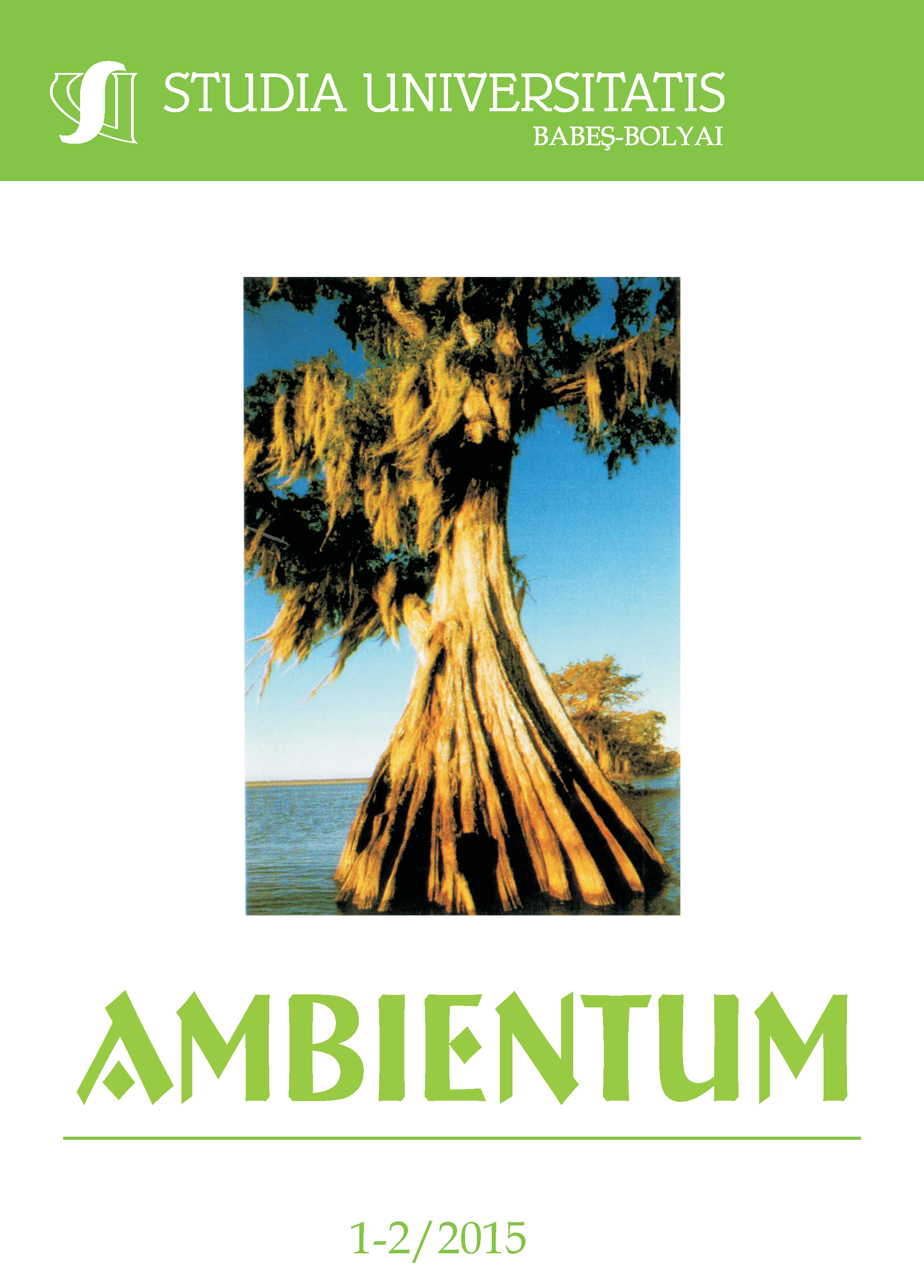THE EFFECTS OF ACID MINE DRAINAGE UPON VEGETATION IN THE BOZANTA TAILINGS POND (MARAMUREŞ COUNTY)
Keywords:
tailings pond, flotation tailings, ARD, A. ferrooxidansAbstract
Owing to the procedures of processing non-ferrous ores, from Baia Mare mining district, containing Au, Ag, Cu, Pb and Zn, resulted large amounts of flotation tailings, which were deposited in Bozânta tailings pond (located between the villages Săsar and Bozânta Mare, 4 km west of Baia Mare town). Due to the presence of minerals containing metal sulphides (mainly pyrite), the acid rock drainage (ARD) has become very active, catalyzed by iron- and sulphur-oxidizing bacteria, especially those of the genus Acidithiobacillus ferrooxidans, Leptospirillum ferrooxidans, Acidithiobacillus thiooxidans, Thiomonas intermedia and Starkeya novella, which naturally occur in these sites. Bacterial oxidation of these minerals leads to the production of acid rock drainage, contaminating the environment with heavy metals. In this study we investigated the effects of ARD on the tailings, but also on plantations of acacia (Robinia pseudoacacia) from sector 5 (were the tailings was not covered with soil) compared to sectors 1-4 (where the tailings were covered with soil). On the surface of the tailings pond, in sector 5, a non-homogeneous appearance of the flotation tailings can be noticed, with different oxidation stages; landslides; ravines up to 100 cm deep; driftings of tailings and seepage solutions areas. Dependent on the age of the tailings, and the action time of the ARD phenomena, the pH value decreased from 7.7 to 2.9. The decrease in pH below 5 caused the vegetation to die. When additional countermeasures of covering with soil the tailings were taken in the sectors 1-4 of the tailings pond, the effects of the ARD phenomena were diminished and helped vegetation flourish.
References
Garrity, G.M. (Ed in chief), Brenner, D.J., Kreig, N.R., Staley, J.T. 2005. Bergey’s Mannual of Systematic Bacteriology, 2nd Edition, Vol. 2: The Proteobacteria, Part A: Introductory Essays, Springer, Berlin.
Hutchinson, M., Jonstone, K.J., White, D. 1965. The taxonomy of certain thiobacilli. J. Gen. Microbiol., 41, pp.357-366.
Jelea M., Jelea S.G., Kovacs Zs.M., Gheţa D.E. 2007. Research concerning the oxidation degree of the sulphidic tailings from the Novaţ tailings storage facility. Carpath. J. Earth Env., 2(2), pp.45-55.
Jelea O.C., 2014. Drenajul acid al rocilor şi efectele poluante asupra mediului. BIO-ME, 6, 19-29.
Kelly, D.P., McDnald, I.R., Wood, A.P. 2000. Proposal for the reclassification of Thiobacillus novellus as Starkeya novella gen. nov., comb. nov., in the alpha-subclass of the Proteobacteria. Int. J. Syst. Evol. Microbiol., 50, pp.1797-1802.
Mackintosh, M.E. 1978. Nitrogen fixation by Thiobacillus ferrooxidans. J. Gen. Microbiol., 105, pp.215-218.
Matin, A., Rittenberg, S.C. 1971. Enzymes of carbohydrate metabolism in Thiobacillus species. Journal of Bacteriology, 107(1), pp.179-186.
Mihali C., Oprea, G., Michnea, A., Jelea, S.G., Jelea, M., Man, C., Şenilă, M., Grigor, L., 2013. Assessment of Heavy Metals Content and Pollution Level in Soil and Plants in Baia Mare Area, NW Romania. Carpathian Journal of Earth and Environmental Sciences, 8(2), pp.143-152.
Modoi, O.C., Ozunu, Al., Stezar, I.C. 2010. Risks Associated to Soil Pollution in the Proximity of Tailing Facilities in the Western Area of Baia Mare. ProEnvironment, 3, pp.352-358.
Roba, C., Rosu, C., Piştea, I., Baciu, C., Costin, D., Ozunu, A. 2015a. Transfer of heavy metals from soil to vegetables in a mining / smelting influenced area (Baia Mare - Ferneziu, Romania), Journal of Environmental Protection and Ecology, 16(3), pp.891-898.
Roba, C., Roşu, C., Piştea, I., Ozunu, A., Baciu, C. 2015b. Heavy metal content in vegetables and fruits cultivated in Baia Mare mining area (Romania) and health risk assessment. Environmental Science and Pollution Research; 1-12, JUN. 2015. (on line).
Sand, W., Gehrke, T., Hallmann, R., Schippers, A. 1995. Sulfur chemistry, biofilm, and the (in)direct attack mechanism - a critical evaluation of bacterial leaching. Appl. Microbiol. Biotechnol., 43, pp.961-966.
Schippers, A., Jozsa, P-G., Sand, W., Kovacs, Zs.M., Jelea, M. 2000. Microbiological Pyrite oxidation in a Mine Tailings heap Its Relevance to the Death of Vegetation. Geomicrobiology Journal, 17(2), pp.151-162.
Schippers A., Sand W., 1999, Bacterial Leaching of Metal Sulfides Proceeds by Two Indirect Mechanisms via Thiosulfate or via Polysulfides and Sulfur. Appl Environ Microbiol. 65(1), pp.319-321.
Wentzien S., Sand W., 1999, Polythionate metabolism in Thiomonas intermedia K12. 1999. In: Process Metallurgy, Vol. 9A; No. Biohydrometallurgy and the Environment toward the Mining of the 21st Century, Pt. A, pp.787-797.
Wentzien S., Sand W., 2004, Tetrathionate Disproportionation by Thiomonas intermedia K12. Engineering in Life Sciences, 4(1), pp.25-30.
***National Agency for Environmental Protection (ANPM). 2007. Annual report on the environmental situation in Romania, http://www.anpm.ro/files2/5%20SOL_20081219742413.doc.
Downloads
Published
How to Cite
Issue
Section
License
Copyright (c) 2015 Studia Universitatis Babeș-Bolyai Ambientum

This work is licensed under a Creative Commons Attribution-NonCommercial-NoDerivatives 4.0 International License.





 ISSN (online): 2065-9490 | ISSN (print): 1843-3855 | ISSN-L: 2065-9490
ISSN (online): 2065-9490 | ISSN (print): 1843-3855 | ISSN-L: 2065-9490